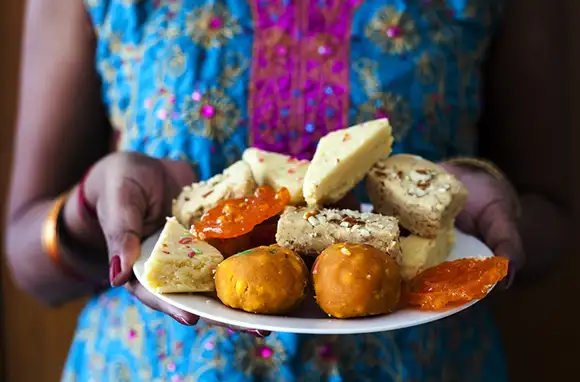
Tempt your palate with more than just new flavors on your next trip. Immerse yourself in a local culinary tradition, one that whisks you via motorbike between Saigon’s street-food vendors or sends you into the forest with a truffle-sniffing dog in Italy. These 10 cultural food experiences will give you a truly authentic taste of some mouthwatering destinations around the world.
Image Gallery

Kebabs at a Moroccan Souk
If there's one weekly gathering the locals don't miss in Essaouira, Morocco, it's the souk Lathnine (Monday market). For hundreds of years, residents have planned their week around this food and social ritual, plucking fresh fruits and vegetables from towering pyramid-shaped piles, choosing meats that hang from giant hooks, and eating kebabs from food stalls with friends and family who travel to town for the occasion. Some drive to the souk. Others bring their donkeys along trails through olive groves and tie them up in the donkey parking lot. After shopping, they load up their donkey with their purchases and head home to marinate their chicken, lamb, or beef in cumin, garlic, and coriander to make tasty kebabs for a snack or picnic.
How to Experience It: A guide will take you and a donkey to the souk on Access Trips' eight-night Morocco Culinary Tour ($2,990 per person). You'll learn to barter and to choose the freshest food before heading back to the riad and making kebabs.

Kebabs at a Moroccan Souk
If there's one weekly gathering the locals don't miss in Essaouira, Morocco, it's the souk Lathnine (Monday market). For hundreds of years, residents have planned their week around this food and social ritual, plucking fresh fruits and vegetables from towering pyramid-shaped piles, choosing meats that hang from giant hooks, and eating kebabs from food stalls with friends and family who travel to town for the occasion. Some drive to the souk. Others bring their donkeys along trails through olive groves and tie them up in the donkey parking lot. After shopping, they load up their donkey with their purchases and head home to marinate their chicken, lamb, or beef in cumin, garlic, and coriander to make tasty kebabs for a snack or picnic.
How to Experience It: A guide will take you and a donkey to the souk on Access Trips' eight-night Morocco Culinary Tour ($2,990 per person). You'll learn to barter and to choose the freshest food before heading back to the riad and making kebabs.

Diwali Sweets in India
India celebrates its biggest festival each fall with thousands of glowing lamps, feasts, fireworks, and mithai, or sweet treats. During Diwali, the five-day Festival of Lights, Indians decorate their homes and put on their finest clothes for the occasion that represents the victory of light over darkness, good over evil. Friends and neighbors visit each other, exchanging gifts of sweet treats and wishing each other the best during the season. Motichoor ladoo (ball-shaped sweets made with gram flour and almonds) and kaju katli (cashew fudge with cardamom) are two favorites on a long list of Diwali sweets that are prepared for the festival.
How to Experience It: On the Go Tours runs an eight-day Diwali tour, on which you can see festival ceremonies at Mahadev Temple followed by fireworks and a traditional Diwali dinner with the popular sweets.
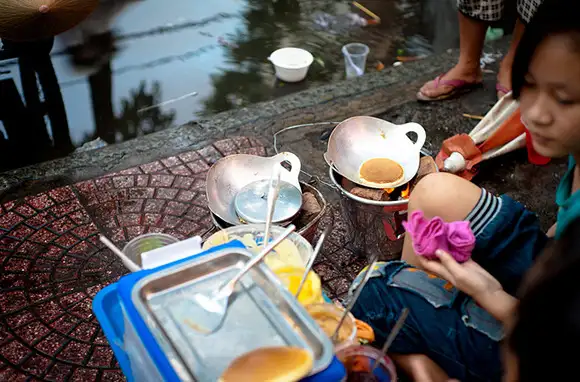
Street Food in Vietnam
Oh, the aromas you can smell wafting from the noisy street-food stalls that line the roads of Ho Chi Minh. This is where the city's favorite cheap cuisine is dished out. Locals eat standing up or grab seats at sidewalk tables just inches from motorbike traffic to slurp down sea snails eaten with a safety pin or crunch on frogs grilled with lemongrass and chili. You'll also find an abundance of streetside pho noodle soup and hotpot stalls, where locals banter about the best ways to cook the ingredients.
How to Experience It: If you're not the type to just start trying things before you know what they are, local food tours such as Saigon Street Eats ($40 to $65) can help. Guides give you a proper introduction and take you to vendors with good reputations, places that do high volume so the food is always fresh. On a nine-day Vietnam Culinary Tour with Access Trips, you'll sample street food and learn to cook it (about $3,000). Both tours allow you to experience it like a local: on the back of a motorbike.
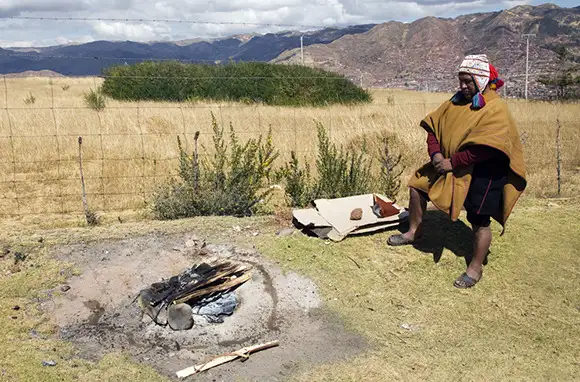
Underground Cooking in Peru
Tracing its roots as far back as the Inca Empire, Peru's traditional Pachamanca dish is a savory, slow-cooked test of patience. Just before sunset, a shaman typically blesses a lamb before it is killed for the feast. Then a pit is dug, filled with firewood, and covered with rocks. The freshly butchered meat (sometimes alpaca, llama, or dried guinea pig), along with a mix of potatoes and herbs, cooks directly on the stones, and a top layer of earth and grass is added to trap in the heat. Before the "oven" is sealed, three drops of liquor go in, a gift to Pachamama, the mother deity of the Andean religion. Quickly, the fire dies out, and the hot rocks simmer the meat for a couple of hours while you sit and watch the sun set below the mountain peaks.
How to Experience It: Pachamanca feasts coincide with the Andean New Year and the winter and summer equinoxes. RealWorld Holidays customizes these authentic experiences in the Sacred Valley near Cusco ($200 per person).

Bread of the Dead in Mexico
On November 1 and 2, Mexico celebrates Day of the Dead with candlelit processionals, late-night graveyard parties, and altars built to remember the departed. Families prepare and eat the sugar-coated pan de muerto (bread of the dead) as well as favorite foods and drinks of the deceased. Considered an ancient culinary tradition and iconic symbol of the holiday that coincides with All Souls' Day, the bread is said to serve as sustenance for the souls returning to Earth during the celebration. Typically, it is eaten sliced and sometimes buttered.
How to Experience It: In Playa del Carmen, you can try pan de muerto at several of the restaurants that line Fifth Avenue downtown, the route of the holiday's parade. One of those is Yaxche Maya Cuisine, which features a traditional Hanal Pixan (Food for the Souls) dinner on November 2. Each year, Barcelo Maya Beach Resort and other resorts in the Riviera Maya serve the specialty on their traditionally decorated buffets. The Riviera Maya's biggest Day of the Dead celebration takes place at Xcaret eco-archaeological park.

Pot Food in South Africa
A staple of nomadic Dutch settlers and the Bantu Tribe in the 17th and 18th centuries, potjiekos (pot food) cooked outdoors in three-legged cast-iron pots is a tradition that continues around the campfire today. Years ago, when pioneers would stop their wagons for the day and set up camp, any game that had been shot—mutton, goat, or old oxen—was butchered and added to a pot, along with whatever vegetables were found. Little sauce or water is used in this dish, which makes it less like a stew and more like a steam-cooked food. The tradition has now become a social activity, where friends and families chat fireside while the softly bubbling potjie simmers chicken, beef, or lamb cooked with Dutch-Malay spices. After three to six hours, it's dished out over a maize-based polenta and served under a starry sky.
How to Experience It: Sample it on the seven-day African Insight overland group camping expedition with Acacia Africa (around $1,000 per person).

Tamales in Arizona
Just before Christmas, it's a tradition for families in the American Southwest to get together and prepare big batches of tamales to share. Multiple generations cram into someone's kitchen for the labor-intensive process: stuffing pork, beef, and cheese with green chiles into corn meal within a corn husk, then steaming and burying them beneath from-scratch salsas and garnishes.
How to Experience It: Every December, the population doubles in the little farming town of Somerton, Arizona, for the Somerton Tamale Festival. Here, you'll be welcomed into a big boisterous family for the day as you try several varieties of tamales you never knew existed. Proceeds help fund university scholarships for local students, many of whom are the first in their families to attend college. Can't make the festival? Main Street Cafe in Somerton and La Fonda in Yuma are favorite stops for tamales.

Roast Suckling Pig in Colombia
In several cities around the world, big celebrations are marked with a suckling pig, roasted and laid out on the table with an apple in its mouth. Meat of a pig not yet weaned from its mother is especially tender, especially when slow-roasted in an outdoor brick oven for several hours. As it cooks, the pig's skin tightens, pulling the mouth into the shape of a broad smile. And stuffing an apple into that gap has become a traditional symbol of a celebratory feast. In Bogota, the dish is called lechona. After the pig is killed, the organs are removed and the inside is filled with rice, beans, carrots, onions, peppers, and pork. Look for it on Independence Day as well as Christmas and New Year's Eve.
How to Experience It: Lechona has become a popular staple at Bogota's main soccer stadium, El Campin. It is also sold throughout the year at some grocery stores.
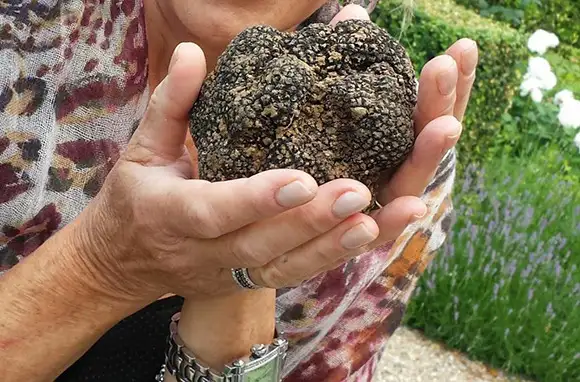
Truffle Hunting in Italy
Surrounded on three sides by the Alps, Italy's Piedmont region is a stunning landscape dotted with small towns, castles, vineyards, and the food-centric traveler's ultimate discovery: the white truffle. Visit in late fall, during harvest season, and you can hunt for the highly prized fungus, a bucket-list item for many—including Oprah Winfrey, who checked it off this season. Looking for truffles is tricky business. Hunts are traditionally led by female pigs (truffle hogs) or truffle dogs (Lagotto Romagnolo breed), which can sniff out the ultra-expensive delicacy. Today, Italy outlaws truffle hogs because their digging disrupts the fungus' reproduction cycle.
How to Experience It: Take Il Salviatino resort's truffle excursion, led by a celebrated truffle hunter and his dog Eda (about $250). He leads you through the forest, then shows you how to clean and cook your finds, before serving you a truffle tasting that includes truffle ice cream. The town of Alba is Italy's truffle epicenter and hosts the annual Alba White Truffle Fair during weekends in October and November.
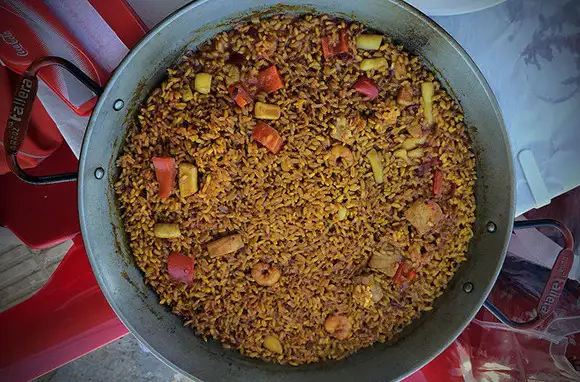
Paella Making in Spain
Originally a farmers' and laborers' lunchtime dish cooked over a wood fire, paella is now widely considered Spain's national dish. It comes from Valencia, a coastal town, where locals use the word to refer to all pans, including the two-handled shallow pan used to cook the namesake food. The steamy dish, a mix of broth, tomatoes, onions, beans, snails, rice, seafood in the shell, and sometimes meat, is the centerpiece of the meal for all kinds of celebrations and holidays. Wafting paprika and saffron aromas, paella is always served family-style, straight from the pan, in homes and restaurants throughout the country.
How to Experience It: Collette's 11- to 13-day Spain's Classics tour takes you on a boat ride on Valencia's canals surrounding the rice-field plantations and to a traditional fisherman's home known as a barraca (starting at $2,149 per person). You'll see a chef's paella-making demonstration and enjoy an authentic paella lunch.
You Might Also Like:
We hand-pick everything we recommend and select items through testing and reviews. Some products are sent to us free of charge with no incentive to offer a favorable review. We offer our unbiased opinions and do not accept compensation to review products. All items are in stock and prices are accurate at the time of publication. If you buy something through our links, we may earn a commission.
Related
Top Fares From
Today's Top Travel Deals
Brought to you by ShermansTravel
Patagonia: 12-Night Hiking Tour w/Meals &...
Exodus Adventure Travels
 vacation
$7000+
vacation
$7000+
7- to 28-Night Mediterranean Cruises w/Onboard...
Holland America Line
 cruise
$1399+
cruise
$1399+
Ohio: Daily Car Rentals from Cincinnati
85OFF.com
 Car Rental
$19+
Car Rental
$19+



